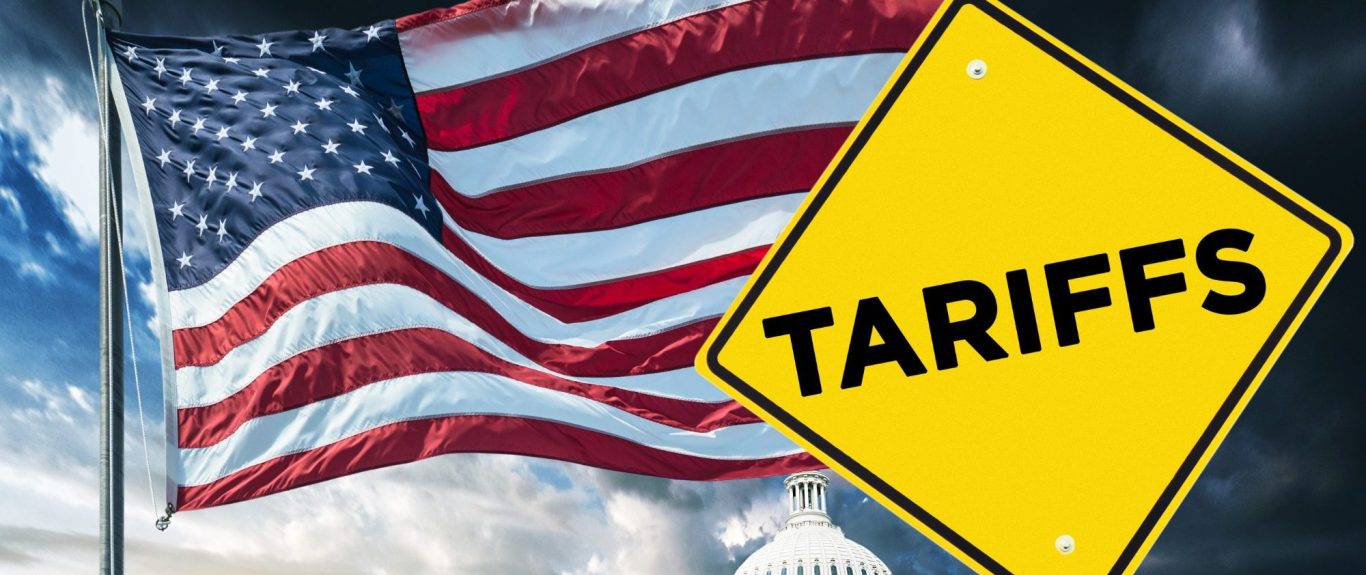The 19% Breakthrough? Assessing Indonesia's Gains in the US Trade Deal
A recalibration is underway in trade relations between Indonesia and the United States, following a newly brokered tariff agreement. This pivotal deal, announced by US President Donald Trump on July 16, 2025, sees the US reducing its import tariffs on Indonesian goods to 19%, a notable decrease from the previously anticipated 32%. This shift marks a profound re-evaluation of the nations' trade framework, as Indonesia commits to granting tariff-free access for nearly all US-origin goods, aiming to foster deeper economic integration and address existing trade imbalances.
This intensified focus on reciprocal market access is reflected in the detailed commitments that have been agreed. While approximately 99% of US products, covering 11,474 out of 11,552 tariff lines, will now enter Indonesia duty-free, certain sensitive items like alcoholic beverages and pork will remain subject to tariffs. Concurrently, Indonesia has pledged substantial purchases from the US, including $15 billion in energy products, $4.5 billion in agricultural goods, and 50 Boeing aircraft, notably the 777 wide-body airliners. This agreement, which President Trump described as opening up Indonesia's entire market to the United States for the first time in history, sets a new precedent for bilateral trade engagement.
Indonesia stands to gain significantly, yet faces distinct challenges from this evolving trade dynamic. The textile and garment industries may see a competitive advantage, as the 19% US tariff is lower than those imposed upon goods from rivals like Vietnam and Bangladesh, potentially safeguarding millions of jobs in these labor-intensive sectors. The National Economic Council (DEN) projects a 0.5% increase in GDP growth for Indonesia, driven by expected foreign investment as global companies consider relocating manufacturing facilities to exploit Indonesia's improved market access, particularly in labor-intensive sectors such as textiles, footwear, and fisheries. Conversely, the palm oil sector, while facing intense competition, now benefits from a more favorable 19% tariff in the US, giving Indonesia an advantage over some key competitors in the market. Similarly, Indonesia's $1.9 billion seafood exports to the US, particularly shrimp, will now incur a 19% tariff, a significant jump from the prior zero-tariff access, impacting competitiveness and increasing production costs.
However, moving so swiftly into a more open trade framework carries inherent challenges. Economist Eko Listiyanto of Indef described the deal as not ideal for Indonesia, as the tariff-free access for US goods combined with the 19% tariff on Indonesian exports will likely shrink Indonesia's trade surplus with the US. Concerns also arise regarding the potential for increased imports of subsidized US agricultural products, which could pose a new challenge for local producers and impact Indonesia's self-sufficiency targets. While President Prabowo acknowledged the negotiations were tough and reiterated his aim for zero percent tariffs, the government broadly welcomes the 19% rate as a relatively balanced outcome; among the lowest tariffs applied by the US to Southeast Asian countries.
Finally, comprehensive strategic responses are crucial to maximize benefits and mitigate risks stemming from this trade realignment. The Indonesian government is actively pursuing further negotiations for zero-percent tariffs on key commodity exports not produced in the US, such as crude palm oil, coffee, cocoa, and nickel, aiming for inclusion in a joint statement document. Industry bodies like the Indonesian Fisheries Processing and Marketing Entrepreneurs Association (AP5I) urge the government to simplify licensing, reduce non-tax state revenue (PNBP) fees, and increase credit ceilings for businesses to offset rising costs. Furthermore, a vital avenue for long-term trade resilience involves diversifying export markets and proactively pursuing new trade agreements, such as the Comprehensive Economic Partnership Agreement (CEPA) with the European Union, to lessen reliance on any single market.
Sources:
- "Prabowo-Trump trade deal: Exploring Indonesia's economic advantages." Antara News, July 19, 2025. https://en.antaranews.com/news/367513/prabowo-trump-trade-deal-exploring-indonesias-economic-advantages
- "New US tariff momentum for industry growth: Minister." Antara News, July 17, 2025. https://en.antaranews.com/news/367045/new-us-tariff-momentum-for-industry-growth-minister
- "Indonesia rejects transshipments, commits to US trade deal." Antara News, July 17, 2025. https://en.antaranews.com/news/367045/new-us-tariff-momentum-for-industry-growth-minister
- "US Tariff Cut Boosts Indonesia's Labor-Intensive Industries - Jakarta Globe." Jakarta Globe, July 19, 2025. https://jakartaglobe.id/business/us-tariff-cut-gives-indonesia-edge-over-vietnam-bangladesh-in-textile-exports
- "Donald Trump announces new deal! Indonesia faces reduced 19% tariff rate; to buy $15 billion in US energy, 50 Boeing jets & more." Times of India, July 16, 2025. https://timesofindia.indiatimes.com/business/international-business/donald-trump-announces-new-deal-indonesia-faces-reduced-19-tariff-rate-to-buy-15-billion-in-us-energy-50-boeing-jets-more/articleshow/122528894.cms
- "Indonesia negotiating zero US tariff for key commodities." Antara News, July 18, 2025. https://en.antaranews.com/news/367397/indonesia-negotiating-zero-us-tariff-for-key-commodities
- "Indonesia Trade Deal Includes High Tariffs, Trump Says - Investopedia." Investopedia, July 16, 2025. https://www.investopedia.com/indonesia-trade-deal-trump-tariffs-11773311
- "Trump's 19% Tariffs: How Should We Respond? - Jakarta Globe." Jakarta Globe, July 20, 2025. https://jakartaglobe.id/opinion/trumps-19-tariffs-how-should-we-respond
- "Apindo Maps Worst-Case Scenarios from US Tariffs - Jakarta Globe." Jakarta Globe, July 14, 2025. https://jakartaglobe.id/business/apindo-maps-worst-case-scenarios-from-us-tariffs
- "US tariff cut to boost Indonesia's economy: DEN." Antara News, July 17, 2025. https://en.antaranews.com/news/367009/us-tariff-cut-to-boost-indonesias-economy-den
- "Indonesia targets new fish markets to counter US tariff threat." Antara News, July 15, 2025. https://en.antaranews.com/news/366657/indonesia-targets-new-fish-markets-to-counter-us-tariff-threat
- "Indonesia-US Trade Deal 'Not Ideal,' Economist Says - Jakarta Globe." Jakarta Globe, July 16, 2025. https://jakartaglobe.id/business/indonesia-us-trade-deal-not-ideal-economist-says
- "Economists Warn of Trade Deficit Risks Following Trump-Prabowo Tariff Deal." Tempo.co, July 19, 2025. https://en.tempo.co/read/1892837/economists-warn-of-trade-deficit-risks-following-trump-prabowo-tariff-deal
- "Indonesia Unveils Strategy to Help MSMEs Survive After Granting 0% Tariff on US Goods." Jakarta Globe, July 18, 2025. https://jakartaglobe.id/business/indonesia-unveils-strategy-to-help-msmes-survive-after-granting-0-tariff-on-us-goods
- "New US Tariffs Put Pressure on Indonesia's $1.9B Seafood Exports." Jakarta Globe, July 16, 2025. https://jakartaglobe.id/business/new-us-tariffs-put-pressure-on-indonesias-19b-seafood-exports
- "US Tariff Aftermath: Indonesia Can Lose Its Palm Oil Market to Malaysia." Jakarta Globe, July 17, 2025. https://jakartaglobe.id/business/us-tariff-aftermath-indonesia-can-lose-its-palm-oil-market-to-malaysia
- "Trump cuts tariff on Indonesian goods to 19 percent after talks." Antara News, July 16, 2025. https://en.antaranews.com/news/366917/president-prabowo-trump-agree-to-boost-indonesia-us-trade-ties
- "Indonesia's 19-percent US tariff is Asia's lowest: Palace." Antara News, July 16, 2025. https://en.antaranews.com/news/366777/president-prabowo-trump-agree-to-boost-indonesia-us-trade-ties
- "Indonesia expects IEU-CEPA to be implemented soon: deputy minister." Antara News, July 20, 2025. https://en.antaranews.com/news/367641/indonesia-expects-ieu-cepa-to-be-implemented-soon-deputy-minister

ECONOMY
July 23, 2025
